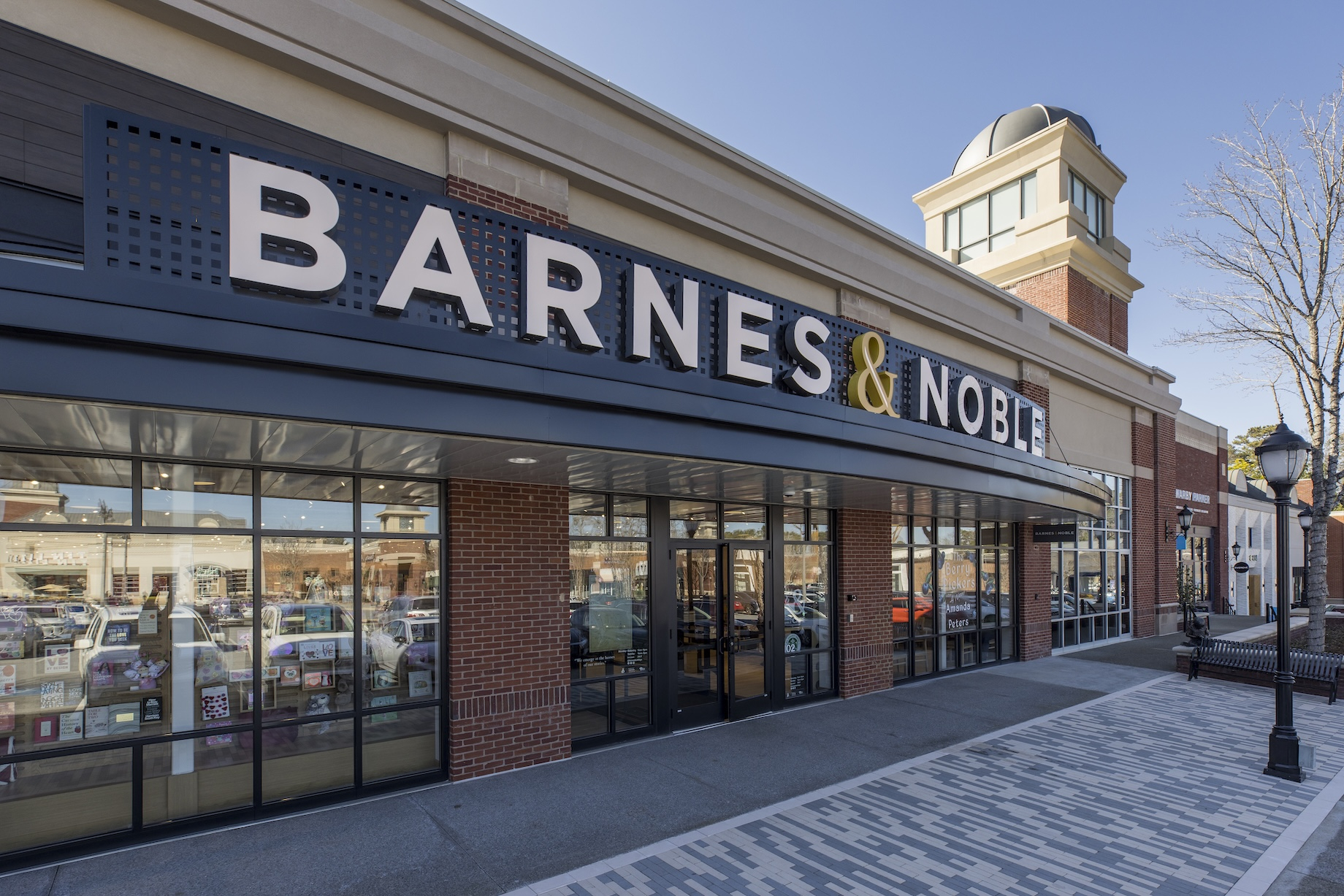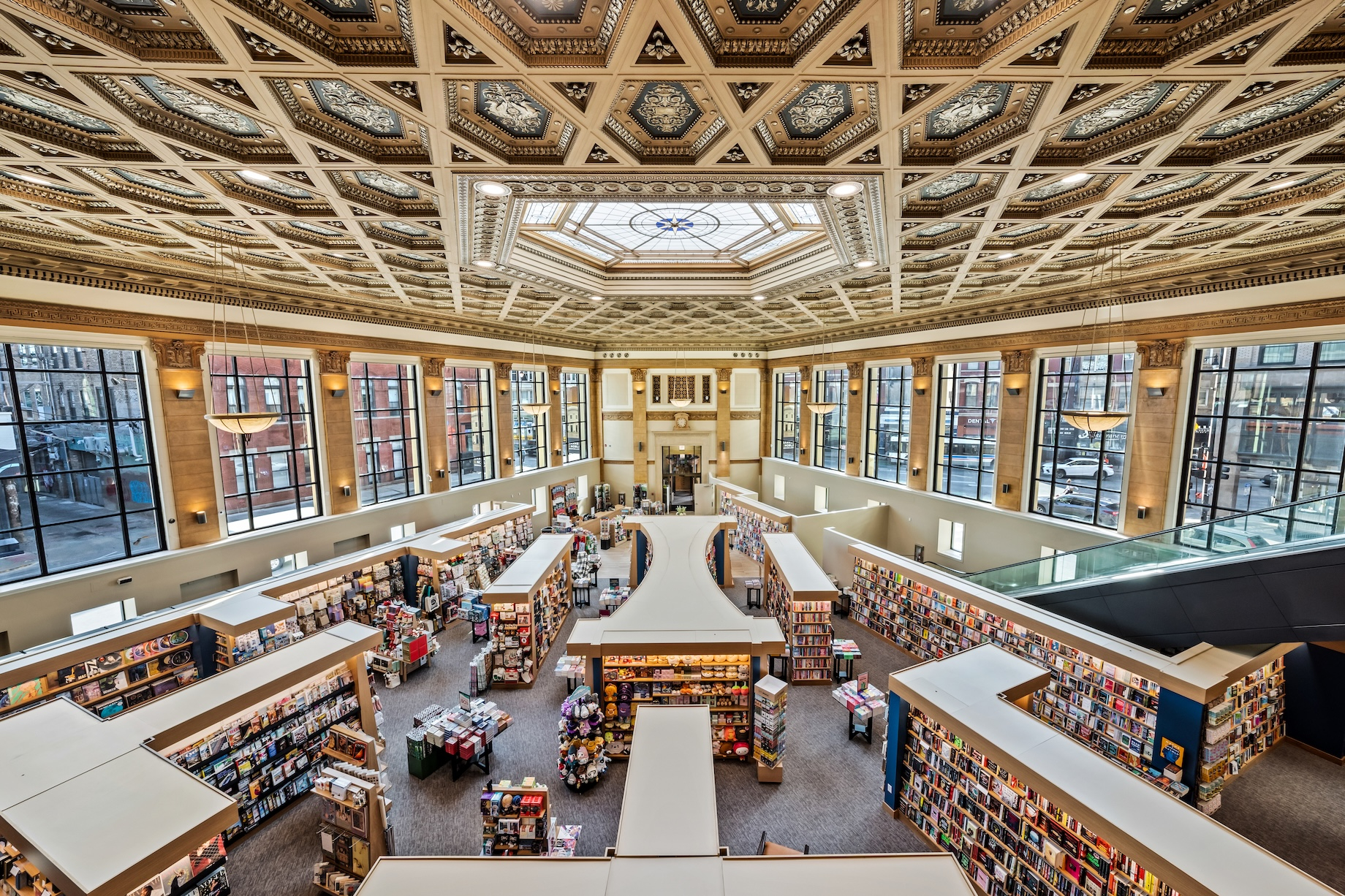The Short Version
- Barnes & Noble plans to open over 60 new stores in 2025, with ambitions to grow its national footprint to more than 1,000 locations in the coming years.
- The retailer’s flexible real estate strategy — with stores ranging from 10,000 to 25,000 square feet — supports its presence in malls, urban centers and lifestyle centers.
- Barnes & Noble is outperforming traditional mall anchors by focusing on customer experience, curated merchandise and immersive store design.
- Under the leadership of CEO James Daunt, Barnes & Noble has embraced an indie bookstore atmosphere with curated layouts, themed tables and a books-first merchandising strategy.
- Its growth demonstrates how legacy brands can reinvent themselves as experience-led traffic drivers in today’s evolving retail landscape.

Barnes & Noble is opening more than 60 new stores this year and showing how flexible formats, local engagement and immersive experiences can transform a legacy retailer into a modern traffic driver.
Those 2025 projects, about 20 of which are complete, include at least 46 net new store openings, said Barnes & Noble head of real estate and development Jason Stryker. The rest are relocations, often carried out after the expiration of leases originally signed back in the 1990s. “We believe we are going to open another 60-plus stores in both 2026 and 2027,” Stryker said. “Depending on how it shakes out, we’ll finish this year just shy of or right at 700 stores. We think we can grow to well over 1,000 stores. It is a long-term growth story.”
Barnes & Noble Outperforms Traditional Anchors in Malls
The Placer.ai white paper Rethinking the Mall Anchor in 2025: A Visit-Focused Approach highlights the performance of the Barnes & Noble at Brookfield Properties’ Coronado Center in Albuquerque, New Mexico. According to the report, the store last year outperformed traditional anchors Macy’s and JCPenney by driving 7.9% of visits to Coronado Center. The location is “a powerful visit-driver out of proportion to its physical size,” the authors contend. Brookfield associate vice president of big-box leasing Chris Milkie told C+CT that Barnes & Noble “exemplifies the kind of adaptive, experience-driven retail that people of all ages love.”
The retailer’s location at the Jamestown-owned Avenue East Cobb in suburban Atlanta also is driving strong sales and traffic said Jamestown director and head of retail leasing Adam Schwegman. The 15,500-square-foot store opened in October 2023 in a former Bed Bath & Beyond box. “They have done a really good job,” Schwegman said. “Right around 10% of our traffic at East Cobb could be attributable just to Barnes & Noble.” The store, which Schwegman considers an anchor, represents less than 7% of the property’s 230,000 square feet. Other tenants include Loft, Gap, Williams Sonoma, Michaels, Panera Bread, Press Waffle Co. and Round Trip Brewing Co.

Barnes & Noble replaced Bed Bath & Beyond at Jamestown’s Avenue East Cobb in suburban Atlanta and is driving disproportionate traffic for its size there. Pictured at top is Barnes & Noble’s Georgetown location in Washington, DC. Photos courtesy of Jamestown and Barnes & Noble
Creating an Indie Bookstore Feel To Deepen Customer Engagement
With its online and in-store sales then in decline, Barnes & Noble was acquired in 2019 by U.K.-based Elliott Advisors. The chain has rebounded under CEO James Daunt, a veteran bookseller who continues to operate independent Daunt Books and oversees more than 300 bookstores in Europe under nameplates like Waterstones, Blackwell’s, Foyles and Hatchards.
Barnes & Noble “has really focused on revitalizing the physical experience, changing the atmosphere and bringing back that idea of community and how books enrich our lives,” said Barrie Scardina, president of Americas retail services for Cushman & Wakefield. The broker, whose firm does not represent Barnes & Noble, recalled visiting the bookseller’s updated locations at New Jersey’s Shops at Riverside and on New Jersey Route 17 next to Fashion Center Paramus. “The environment is comforting but also stimulating,” Scardina said. “There is something about it that makes you want to turn to the person next to you and say: ‘Hey, have you read this?’”

Themed display tables, high shelves and a winding customer journey create a sense of discovery at Barnes & Noble’s updated stores. Pictured are art and cookbooks at the bookseller’s Delray Beach, Florida, location. Photo courtesy of Barnes & Noble
Non-book items like toys, cards, calendars, vinyl records and stationery are part of the mix, but today’s Barnes & Noble takes a “books-first” approach that communicates what the store is all about better than its merchandise-filled, earlier iterations, Scardina noted. “It’s important to find the right balance between what is truly accretive and creates an experience versus what is just ancillary merchandise in the store,” she explained.
Schwegman credits Barnes & Noble for capturing some of the flavor and community focus of an independent bookshop. “The old Barnes & Noble model had gotten a little long in the tooth,” he said. “It was predictable, and all the stores looked the same.” Now, themed tables piled with face-up paperbacks and hardcovers create an opportunity for discovery in Barnes & Noble’s remodeled stores. “You cannot just look over every shelf to see exactly where the history books are. You kind of have to wind through it,” said Schwegman, who recently visited the famed Shakespeare and Company independent bookstore in Paris. “Shakespeare and Company had that, as well. It was intriguing.”

Ornate ceilings and interiors add to the experience at Barnes & Noble’s Wicker Park location. The multilevel store opened in October 2024 in Chicago’s Noel State Bank building, built in 1919 on North Milwaukee Avenue. Photo courtesy of Barnes & Noble
Flexible Store Formats and Localized Merchandising Fuel Growth
Stryker says flexibility is a big reason for Barnes & Noble’s success. While its stores benefit from a national distribution network and infrastructure, he explained, Barnes & Noble encourages its managers to adapt their merchandising and events to local tastes. Some of Barnes & Noble’s most loyal customers visit nearly 20 times per year, he noted. “You would be hard-pressed to find another junior box-type retailer that can generate that type of repetitive traffic.”
Barnes & Noble takes a site-specific approach to its real estate, as well. “One of the things that has allowed us to achieve our growth is that we have been very flexible in our size configuration and square footage,” Stryker said. “Our new stores can run from 10,000 to 25,000 square feet. That’s a massive range.”
The retailer locates in diverse property types, including enclosed regional malls, upscale lifestyle centers and urban shopping districts. It tends to co-locate with full-price operators and premium specialty grocers but is flexible on co-tenants, Stryker added. “There is no strict program that says: ‘We have to be with Tenant X, Y and Z.’”
Barnes & Noble Sets a Blueprint for Experiential Retail Success
Larger operators packed with commodified merchandise — names like Forever 21, Joann, Big Lots and Party City — have run into trouble over the past couple of years, but as Scardina and Schwegman see it, Barnes & Noble is setting an example by emphasizing not just the goods on offer but also the in-store experience. “Commodities can be bought in so many other formats,” Schwegman said. “That is kind of what happened to Bed Bath & Beyond. There has to be something more to it. You can go to Barnes & Noble, spend time, browse and have a coffee.”
The chain’s momentum and ability to backfill vacant space is positive for the Marketplaces Industry, Scardina said. “Barnes & Noble could have had a digital-only life and been perfectly fine, and so it is exciting to see that they are not going to do that,” she said. “It is a great example of a brand coming back, figuring out what it stands for and taking space.”
By Joel Groover
Contributor, Commerce + Communities Today